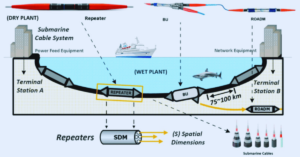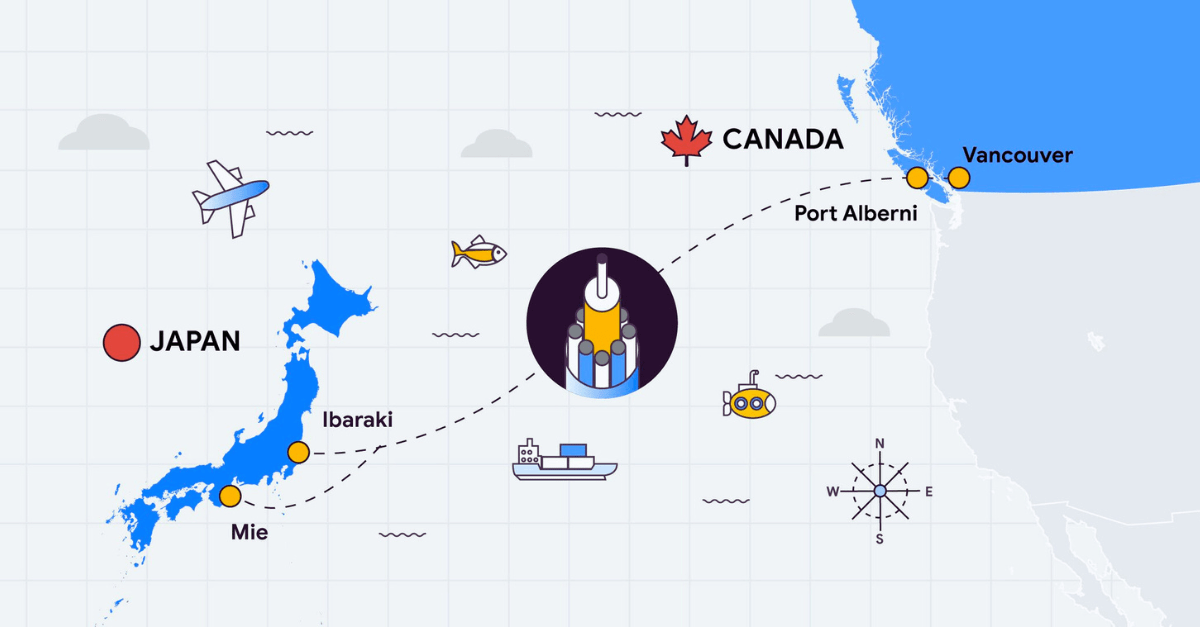Introduction to Google Cloud’s Topaz Project
Through its Topaz Subsea Cable Project, Google Cloud has launched an ambitious adventure to revolutionize internet connectivity worldwide. Not only is this project a demonstration of the progress made in technology, but it is also a significant turning point in the development of worldwide data transfer. The Topaz Cable symbolizes innovation in cloud computing and digital communication. Its primary objective is to improve the speed and dependability of the Internet across many continents.

Understanding Subsea Cables
The core of our global internet infrastructure is comprised of subsea cables, which are buried beneath the surface of the water and function in complete silence. These cables, which are typically no thicker than a garden hose, are the ones that are in charge of transporting the majority of the data that is transmitted around the world, including online and telecommunications traffic. There has been a wonderful voyage of technological advancement, as evidenced by the evolution of subsea cables from telegraph lines to fiber-optic technologies.
Topaz Subsea Cable Origins
Topaz was the project that was initially conceived about. The desire for internet connectivity that is quicker and more dependable worldwide is the driving force behind this. As a result of Google Cloud’s recognition of the growing demand for expanded data capacity and decreased latency, the project began to meet the expanding requirements for worldwide communication. The major objective of this project was to create a subsea cable system that would not only improve connection but also act as a standard for future technological advancements in this field.
Topaz Cable Technical Specifications
Compared to conventional cables, the Topaz Subsea Cable is a remarkable feat of engineering because it possesses sixteen fiber pairs, representing a considerable increase in capacity. Every pair of fibers can carry data at extraordinary rates, lowering latency and enhancing the network’s overall performance. This innovation is essential in meeting the ever-increasing need for bandwidth driven by cloud computing, streaming services, and a wide variety of other applications based on the Internet.
Global Impact of Topaz Cable
This undertaking is going to have a significant influence on the connectedness of the entire world. The Topaz Cable will enable unprecedented data interchange and collaboration across boundaries by linking many continents with high-speed Internet. This will be accomplished by connecting multiple continents. Because it promises to strengthen international trade and open up new markets by providing dependable digital infrastructure, its economic ramifications are equally as significant as its other consequences.
Within the context of the Topaz Project, environmental considerations
Throughout the development of Topaz Cable, Google Cloud has significantly emphasized being environmentally responsible. The undertaking incorporates extensive methods to lessen its influence on marine ecosystems. These tactics involve utilizing environmentally friendly cable-laying procedures and guaranteeing that the presence of the cable will not disrupt marine life.
The Role of AI and Machine Learning in Cable Deployment
Artificial Intelligence (AI) and Machine Learning (ML) have been extremely helpful contributions in putting the Topaz Cable into operation. Utilizing these technologies facilitates accurate route planning, reduces the impact on the environment, and enhances the efficiency of the installation process. In addition, they forecast and manage the requirements for maintenance, which guarantees the cable’s durability and dependability over the long term.
Strategic Locations and Route Map
The route of the Topaz Cable has been meticulously chosen to connect significant worldwide sites, hence improving internet access in areas that are currently underserved and providing redundancy to networks already in place. Not only does this strategic positioning optimize the impact of the cable, but it also secures the cable’s long-term survival and usefulness in the constantly shifting environment of global communication.
Project Challenges and Solutions
There were a lot of obstacles that needed to be overcome for the Topaz project, ranging from technical difficulties to navigational difficulties and legal barriers. These problems were expertly controlled, ensuring the project proceeded successfully. This was accomplished through the utilization of new engineering solutions and strategic collaborations.
In the context of the Topaz Project, collaborations and partnerships
The initiative is the product of collaborations between companies considered giants in their respective industries, utilizing their combined knowledge. Because of these relationships, Topaz Cable has become a result of collective human brilliance. These partnerships have been essential in pooling resources, sharing expertise, and pushing innovation.
Security Aspects of the Topaz Cable
Regarding the Topaz project, security is of the utmost importance. To ensure the safety of the data being transferred across the cable, sophisticated cybersecurity procedures have been implemented. The integrity and security of the information are protected by these procedures, which transform the Topaz Cable into a reliable and secure backbone for digital communication on a worldwide scale.
Cost Analysis and Funding of the Project
The financial scope of the Topaz project is enormous, and significant investments are required to bring it to fruition. The funding approach for the project includes contributions from Google Cloud and its partners, with the primary objective being to achieve a healthy return on investment by increasing the capabilities of the service and expanding the client base.
Impact on Cloud Computing and Data Centers
It is anticipated that Topaz Cable will considerably improve cloud computing services by facilitating data transfer that is both more immediate and more dependable. Data centers worldwide will immediately benefit from this advancement since it will make it possible for them to process and store massive volumes of data more effectively. The consequence of this is a cloud architecture that is more robust, scalable, and efficient, all of which are vital in today’s data-driven world.
Future Expansion and Scalability Plans
Looking into the future, the Topaz project has been developed to be scalable. To continuously adapt to the ever-changing requirements for global connection, Google Cloud plans to increase the capacity of the cable and extend its reach to new locations. This forward-thinking strategy guarantees that Topaz Cable will remain an important and dynamic asset in the global internet infrastructure.
Comparison with Other Global Subsea Cables
In contrast to other worldwide subsea cables, the Topaz Cable stands out due to its impressive capacity, cutting-edge technology, and strategic routing. This comparison draws attention to the distinctive characteristics of the project and reaffirms its status as an innovative attempt in the field of subsea cable technology.
Public Perception and Media Coverage
The Topaz Subsea Cable project has received great attention from the media and the community of technology professionals. The fact that it is innovative and has the potential to influence on a global scale has been positively received, which has sparked conversations about the future of internet access and the role that infrastructure projects like these play in determining our digital future.
Conclusion
The Topaz Subsea Cable Project, which Google Cloud is undertaking, is a big step forward in terms of the Internet’s infrastructure on a global scale. The project establishes a new benchmark for developing subsea cable technology by virtue of its cutting-edge technology, meticulous planning, and unwavering dedication to preserving the natural environment. The Topaz Cable is a monument to human creativity and our collaborative quest for a more connected and efficient global community. It comes at a time when the world is becoming increasingly dependent on digital communication.

